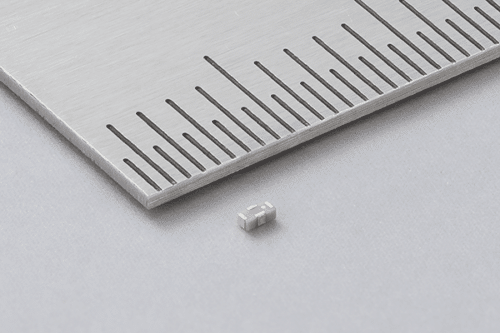The Parasitic Element Coupling Device enhances antenna efficiency through magnetic coupling for Wi-Fi 6E and Wi-Fi 7 products, making it suitable for compact electronics.

Murata has introduced the Parasitic Element Coupling Device, designed to enhance antenna efficiency by employing magnetic coupling with the parasitic element. The solution is tailored explicitly for Wi-Fi 6 E and Wi-Fi 7 products. The company claims it is the world’s first offering catering to these standards. Particularly advantageous for designers working on smartphones, tablets, network routers, game consoles, and other electronic devices, the device empowers them to construct more efficient antennas—a critical necessity for many contemporary gadgets.
Murata’s solution is a parasitic element coupling device, utilizing its multilayer technology as a compact four-terminal surface-mount component measuring just 1.0 x 0.5 x 0.35mm. The parasitic element coupling device establishes a more effective connection between the feeding antenna and its parasitic elements compared to free space coupling. With its compact size, this tiny coupling device achieves robust coupling performance without relying on magnetic materials, which would be unsuitable for the targeted operating frequencies.
With minimal insertion loss, one side of the coupling device links between a device’s device’s RF circuitry and its main antenna, while the other connects between the ground and the parasitic element. This enhanced coupling allows the resonance characteristics of the parasitic element to complement those of the feeding antenna, enabling more efficient operation across a wider frequency range or on multiple discrete bands.
The device addresses the challenge when antennas are scaled down—reduced coupling between the antenna and parasitic elements and increased coupling between the parasitic elements and the ground. By maintaining effective coupling between the feeding antenna and parasitic element, the parasitic element coupling device empowers designers to employ miniaturized antenna design methods without compromising communication band efficiency.
In addition to mitigating impedance mismatch issues associated with wide-band antenna usage, the device also addresses concerns arising from connecting antennas with mismatched impedance to communication circuits using long cables. Long cables can exacerbate impedance mismatches, leading to higher-than-expected insertion loss and significantly reduced wireless communication performance. By incorporating this device, users can enhance antenna matching, minimizing performance degradation in wireless communications even when utilizing extended cables.
For more information, click here.







